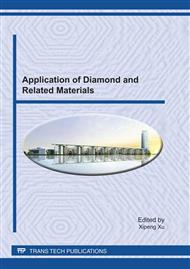p.196
p.201
p.206
p.211
p.215
p.219
p.226
p.233
p.239
An Accurate Method for Calculating the Contact Subsurface Stress Field of Hybrid Ceramic Ball Bearing
Abstract:
In order to predict fatigue life of hybrid ceramic ball bearing (HCBB) by Ioannides and Harris (IH) theory, the contact subsurface stress field is needed. The contact surfaces of ball and race groove are compatible. The closed-form analytical solution of compatible contact problem is hard to be obtained. The Finite Element Method (FEM) together with submodel technology is adopted to accurately and efficiently calculate the contact deformation and subsurface stress of ball–race groove contact. The result indicated that, the FEM with submodel technology considers the real contact deformation of ball-race groove, and can accurately and efficiently calculate the subsurface stress field. It is believed that the calculated subsurface stress field can be used in IH theory to predict fatigue life of HCBB.
Info:
Periodical:
Pages:
215-218
Citation:
Online since:
June 2011
Authors:
Price:
Сopyright:
© 2011 Trans Tech Publications Ltd. All Rights Reserved
Share:
Citation:


